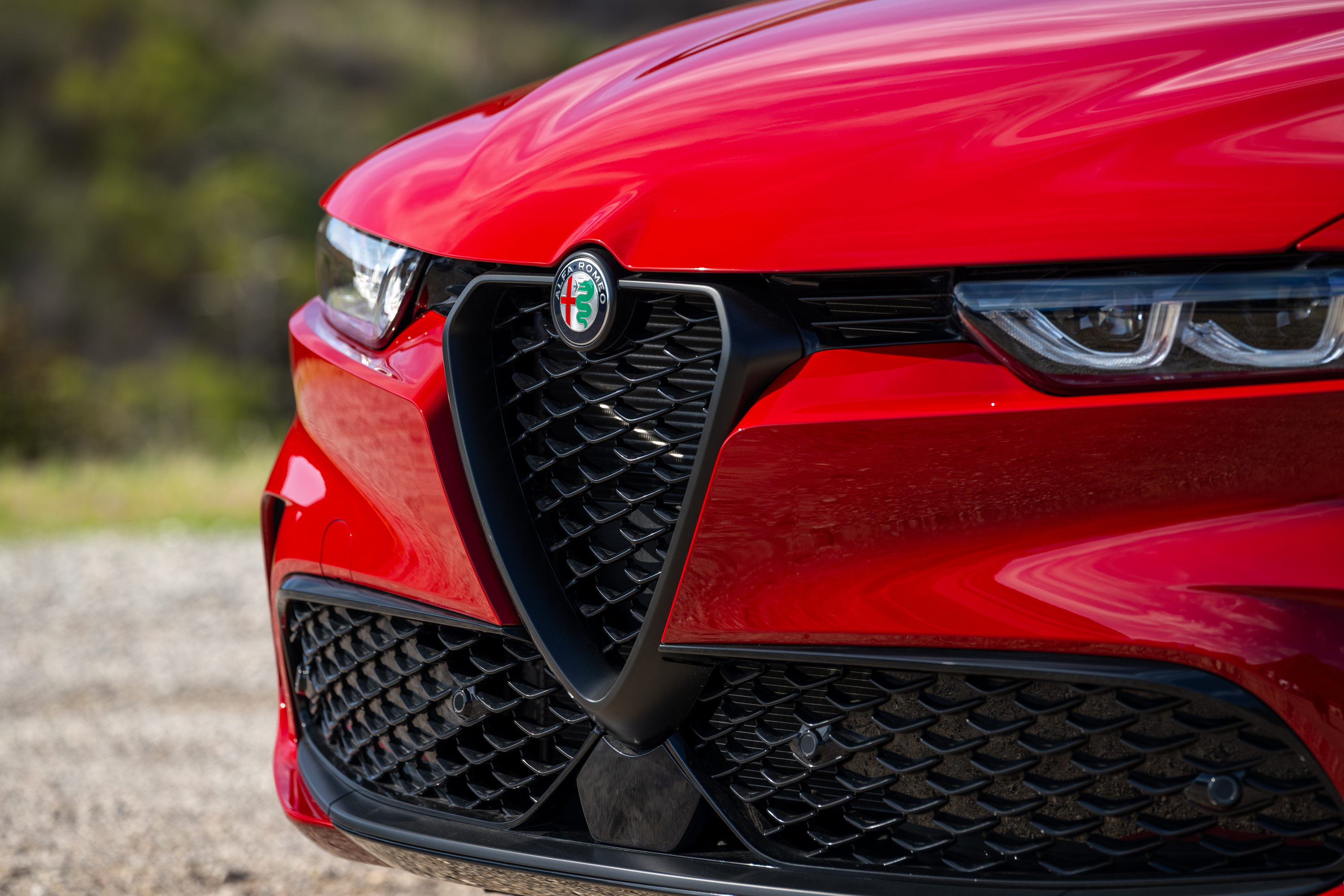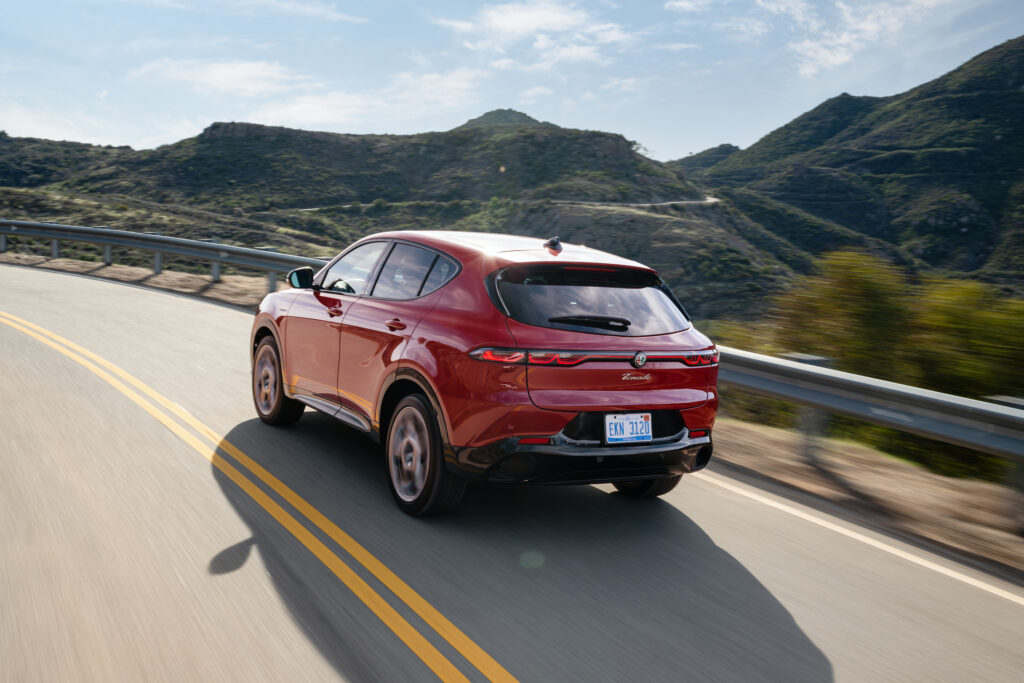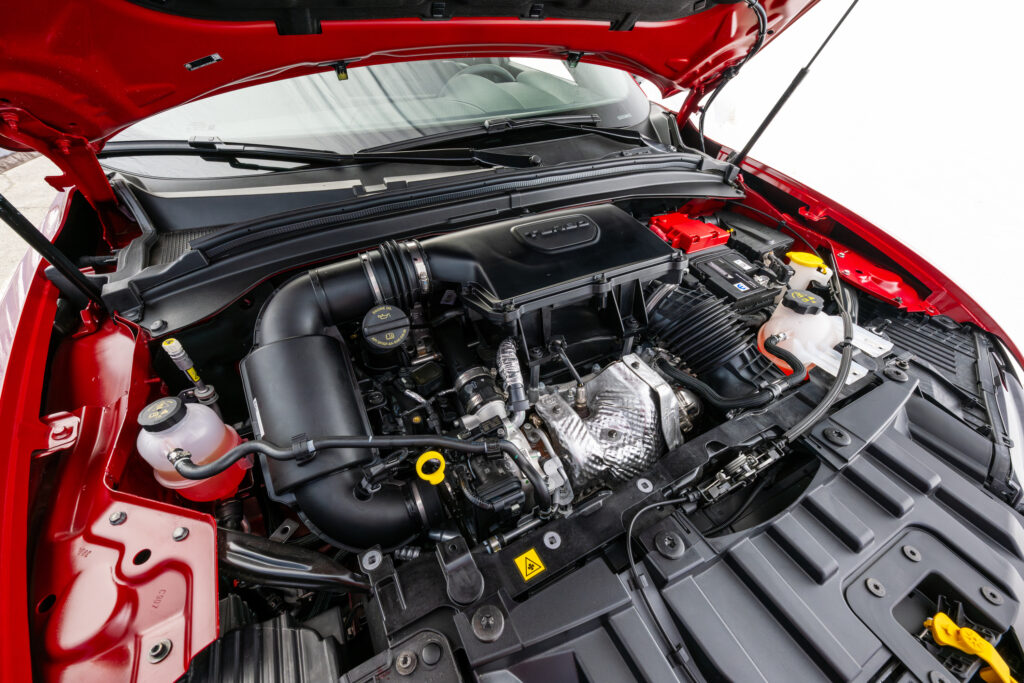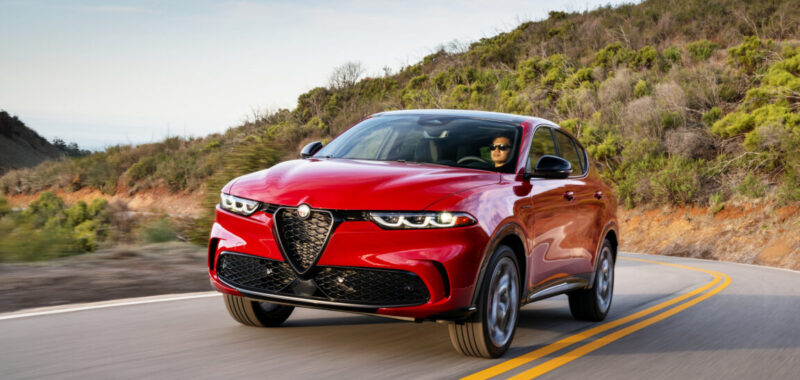They say that with age comes wisdom, so it should come as no surprise that on the eve of Alfa Romeo’s 115th anniversary, the company that originally made its name competing in endurance races like the Targa Florio and Mille Miglia with flame-spitting sportscars is currently looking to increase its market share with a sensible, high-riding crossover.
Produced in Stellantis’ Pomigliano d’Arco assembly plant near Naples, Italy, alongside its mechanical twin, the Dodge Hornet, the Tonale plug-in hybrid introduced last year helped the Italian automaker find a foothold at a time when many of the auto conglomerate’s brands have been struggling. Now, a non-hybrid version of Alfa’s answer to models like the BMW X1 and Audi Q3 has joined the fray, sporting turbocharged power, standard all-wheel drive, and the same sharp styling at a significantly lower base price. But old habits die hard, and as I discovered over the course of a few days with the latest iteration of the Tonale, even Alfa Romeo’s most pragmatic offerings have their fair share of quirks.
The new base model comes with a double overhead-cam 2.0 L inline four-cylinder engine producing 268 hp (200 kW) and 295 lb-ft (400 Nm) of torque. The turbocharged mill is paired with a nine-speed automatic transmission and an all-wheel drive system that can send up to 50 percent of the available torque to the rear wheels. While those numbers are down a bit compared to the Tonale Hybrid, at 3,715 lbs (1,685 kg), the 2.0 L Turbo is more than 400 lbs (181 kg) lighter than the PHEV model.

Alfa Romeo
Alfa’s iconic goofy tooth-grin.
Alfa Romeo

Alfa Romeo
A long drive to Palm Springs revealed that the moonroof gets in the way for taller drivers.
Alfa Romeo

Alfa Romeo
The Tonale’s 2.0 L 268 hp turbocharged engine.
Alfa Romeo
A long drive to Palm Springs revealed that the moonroof gets in the way for taller drivers.
Alfa Romeo
The Tonale’s 2.0 L 268 hp turbocharged engine.
Alfa Romeo
The 2.0 L Turbo offers more precise handling as a result, while its mid-five-second sprint to 60 mph (98 km/h) is similar to the hybrid’s, despite the latter’s power advantage. EPA fuel economy figures of 21 mpg city (11.2 L/100 km), 29 mpg highway (8.11 L/100 km), and 24 mpg combined (9.8 L/100 km) indicate that the 2.0 L Turbo is thirstier, though. On a drive from LA to Palm Springs and back—which included a bit of canyon driving along the way—I saw an average of about 26 mpg (9 L/100 km).

